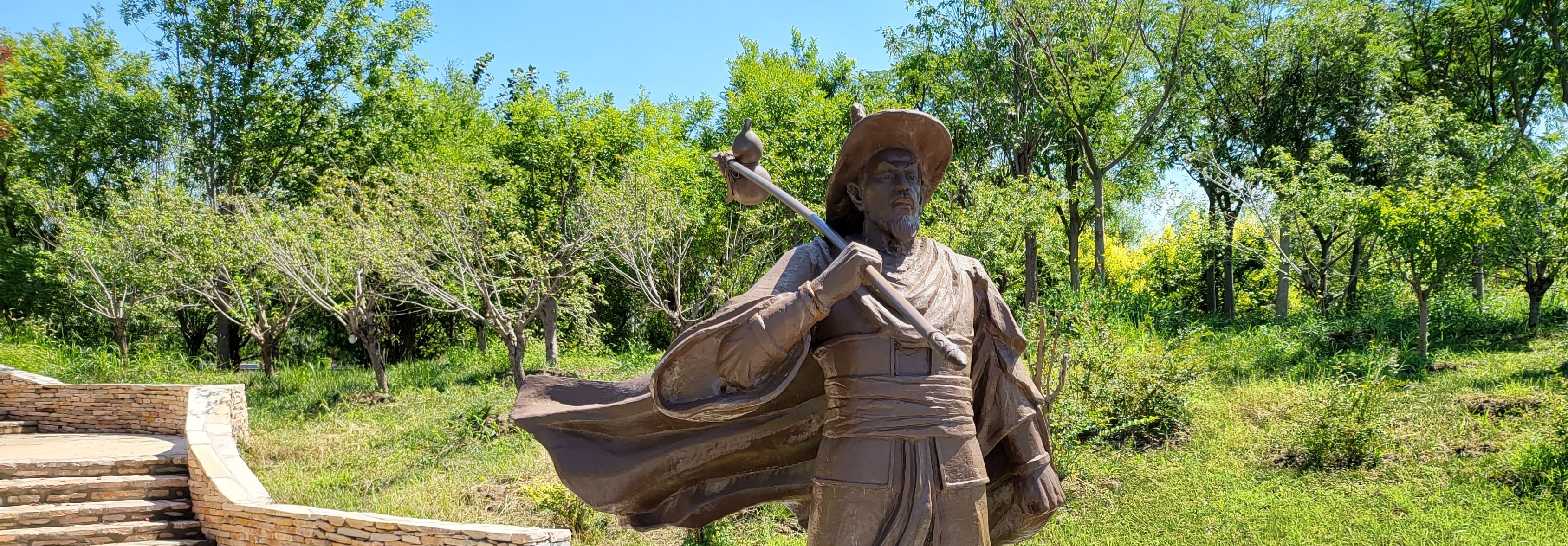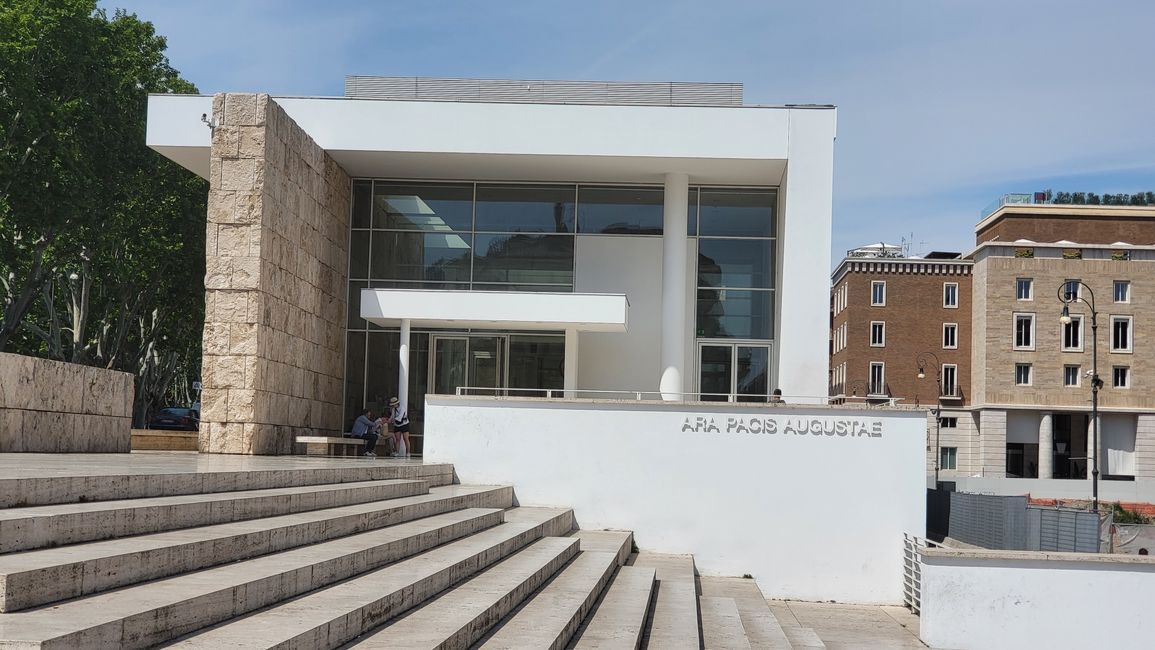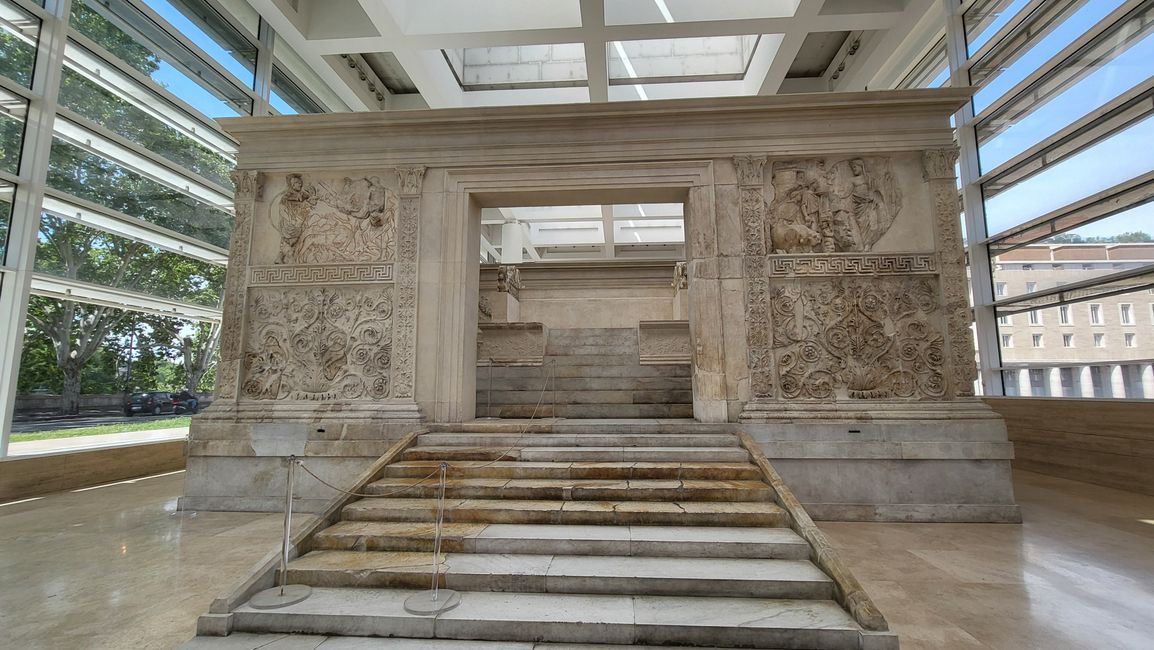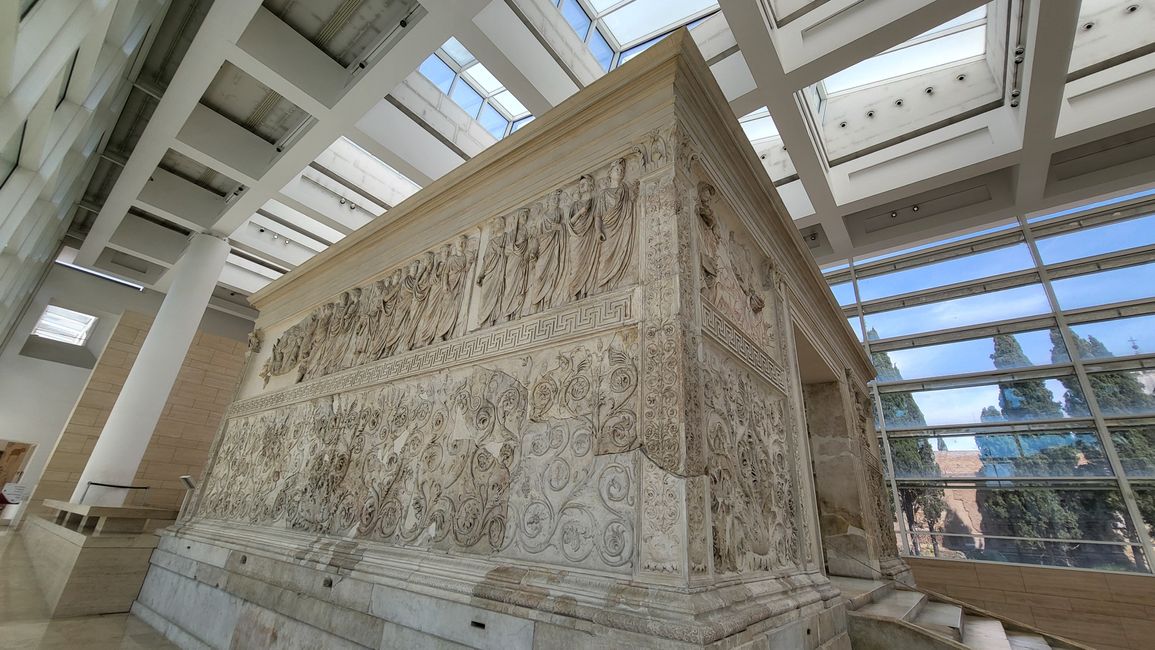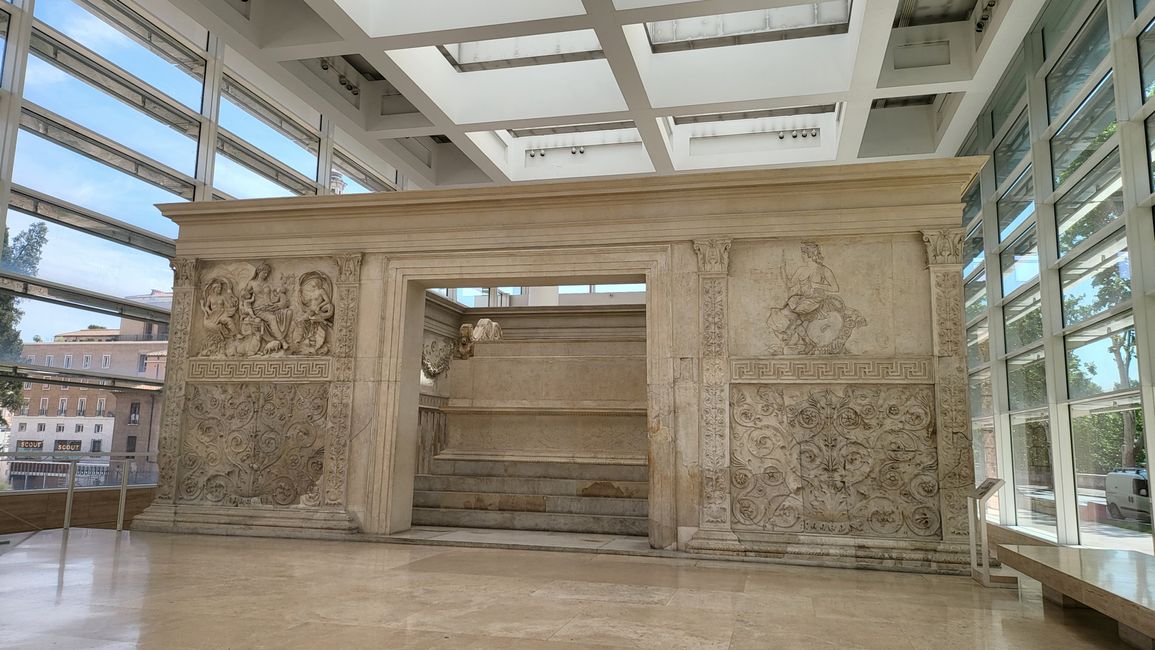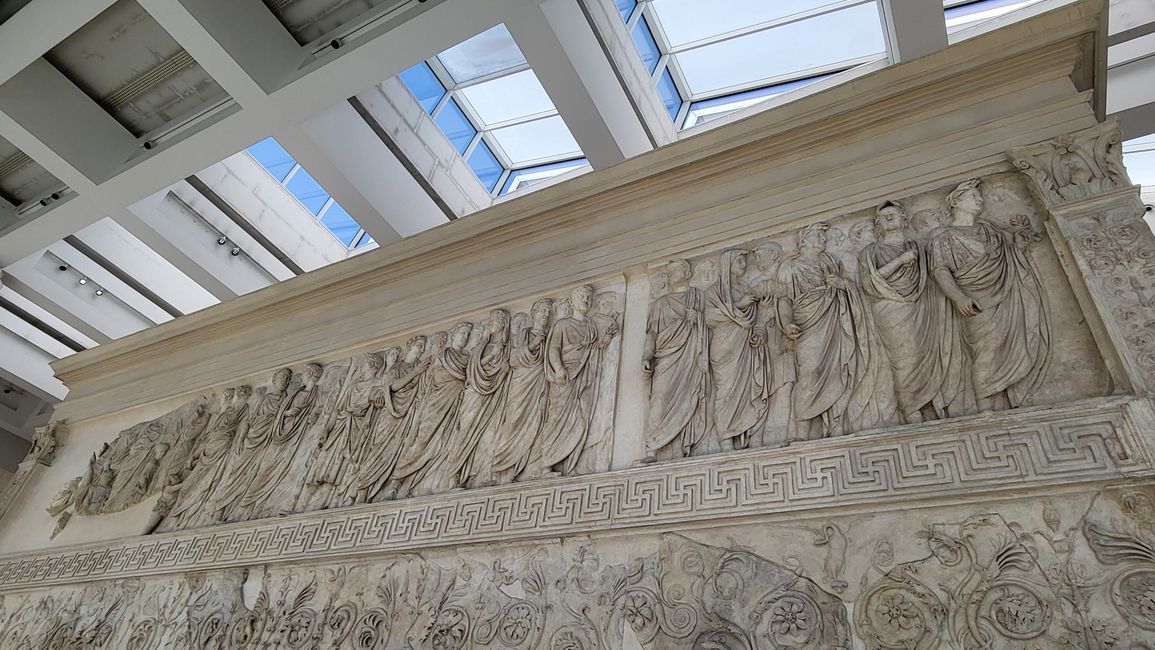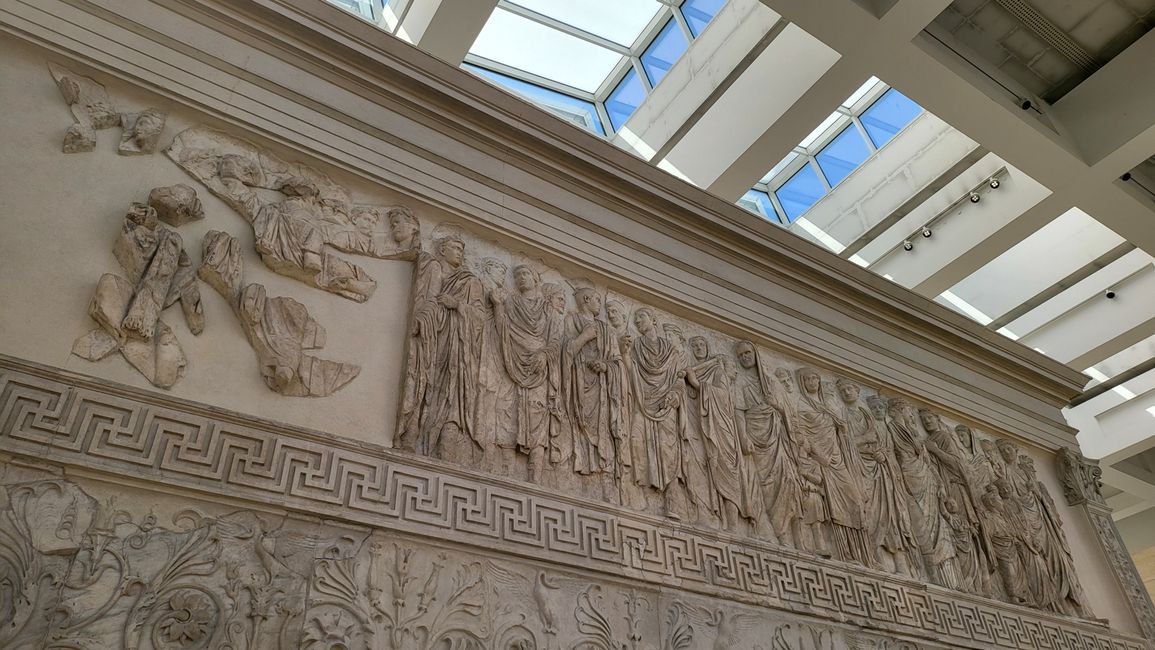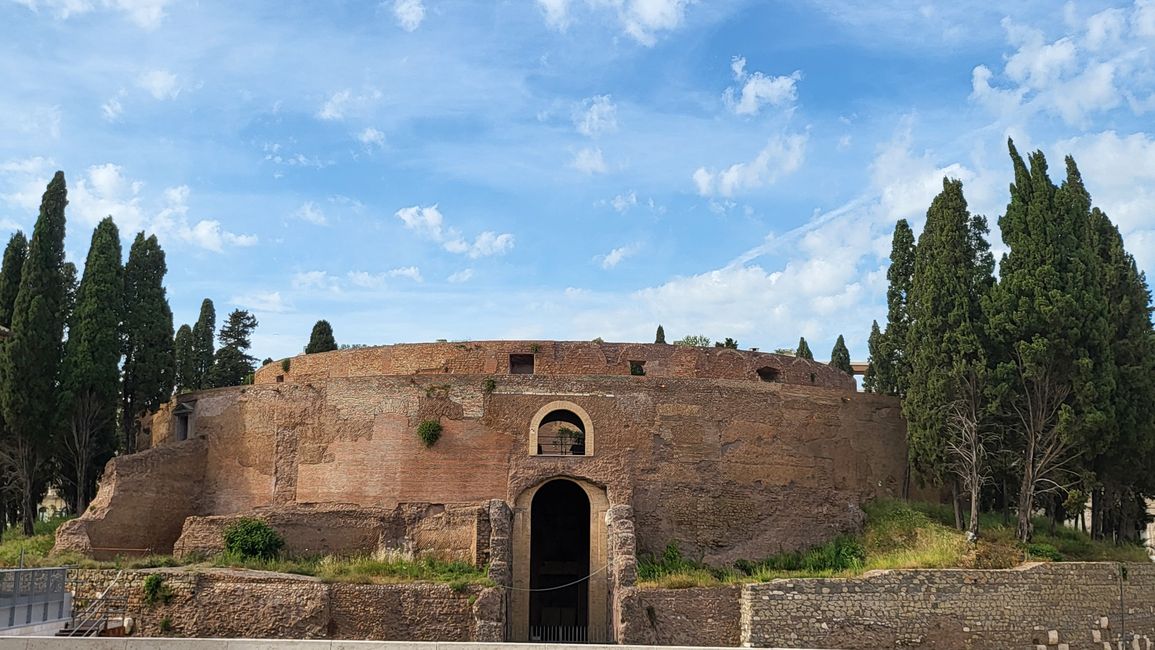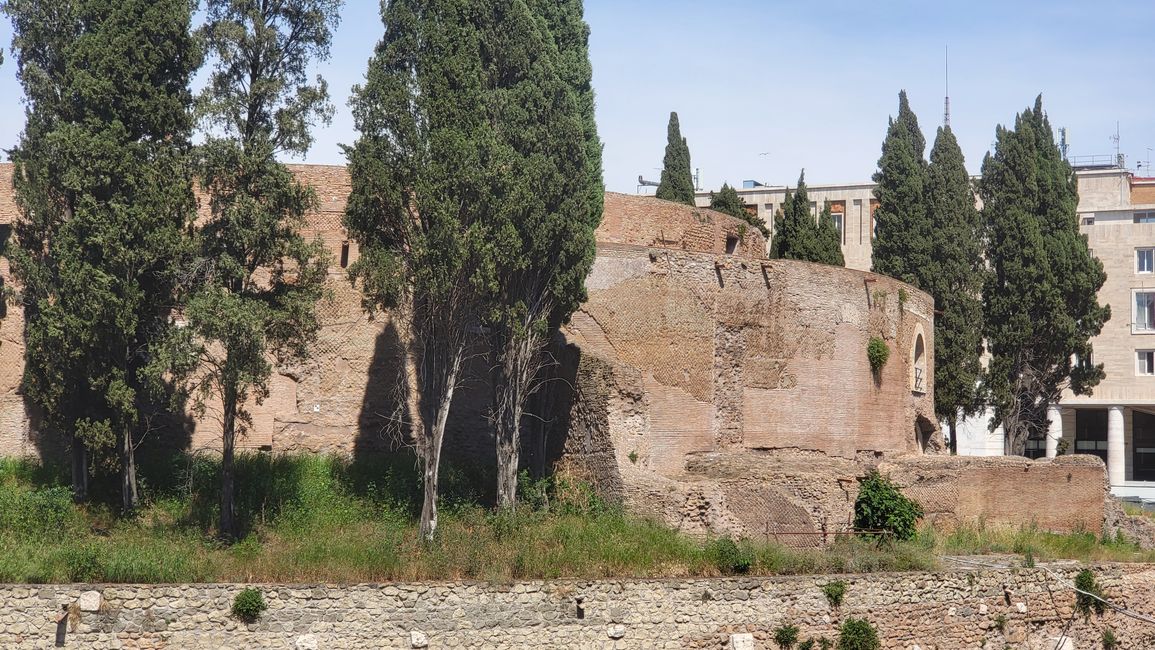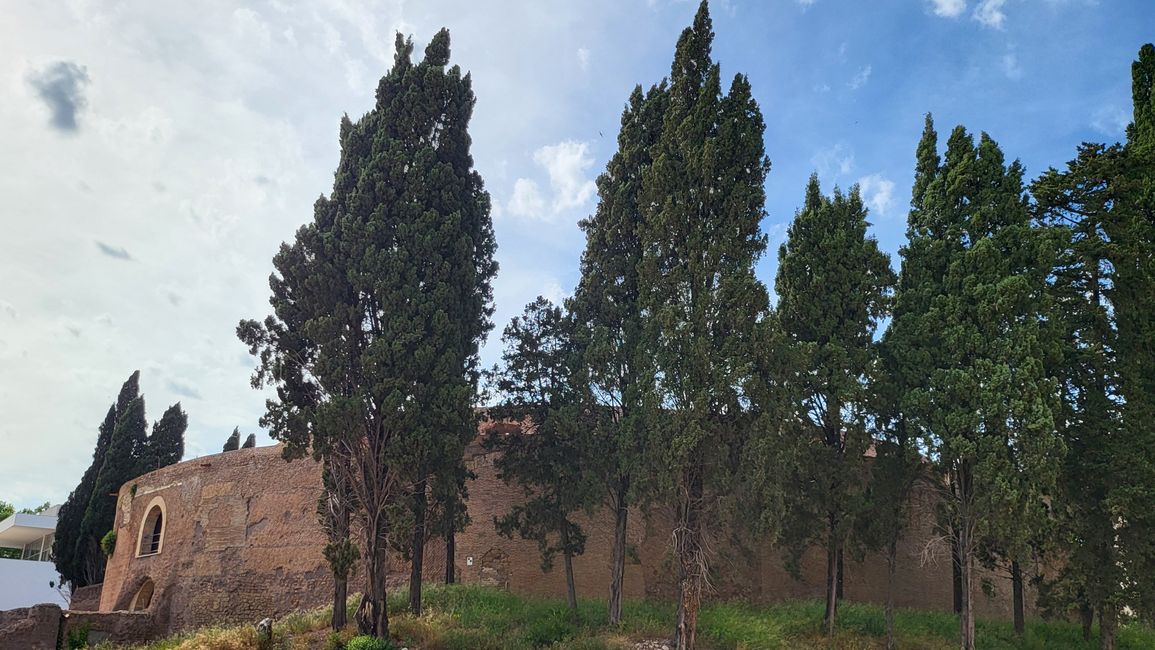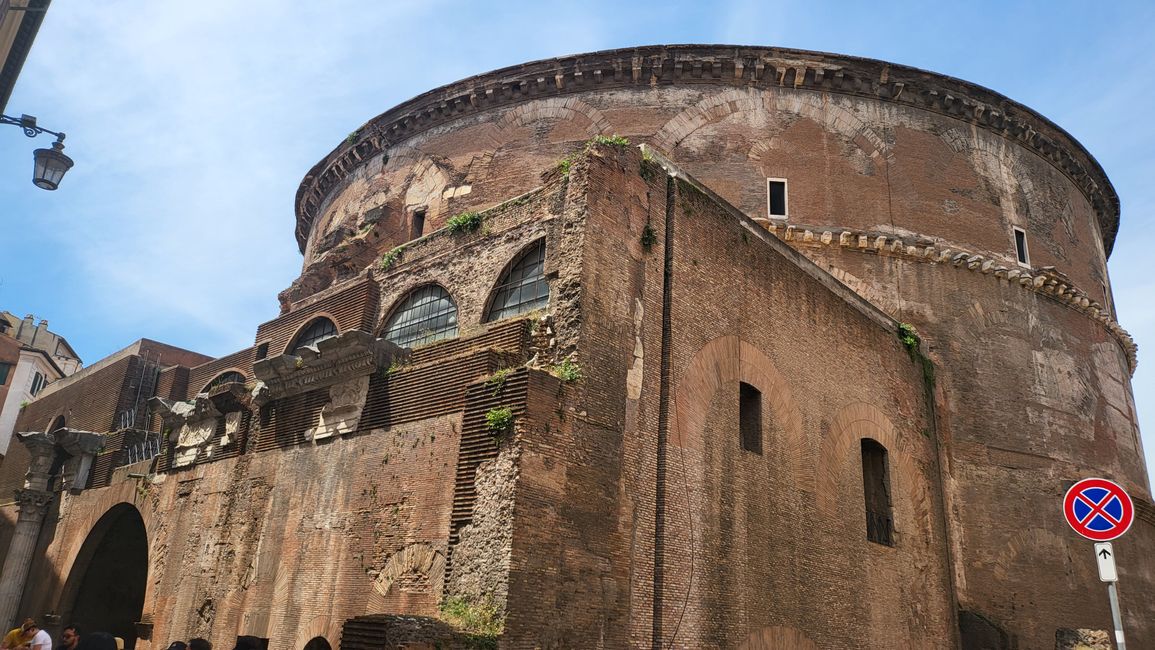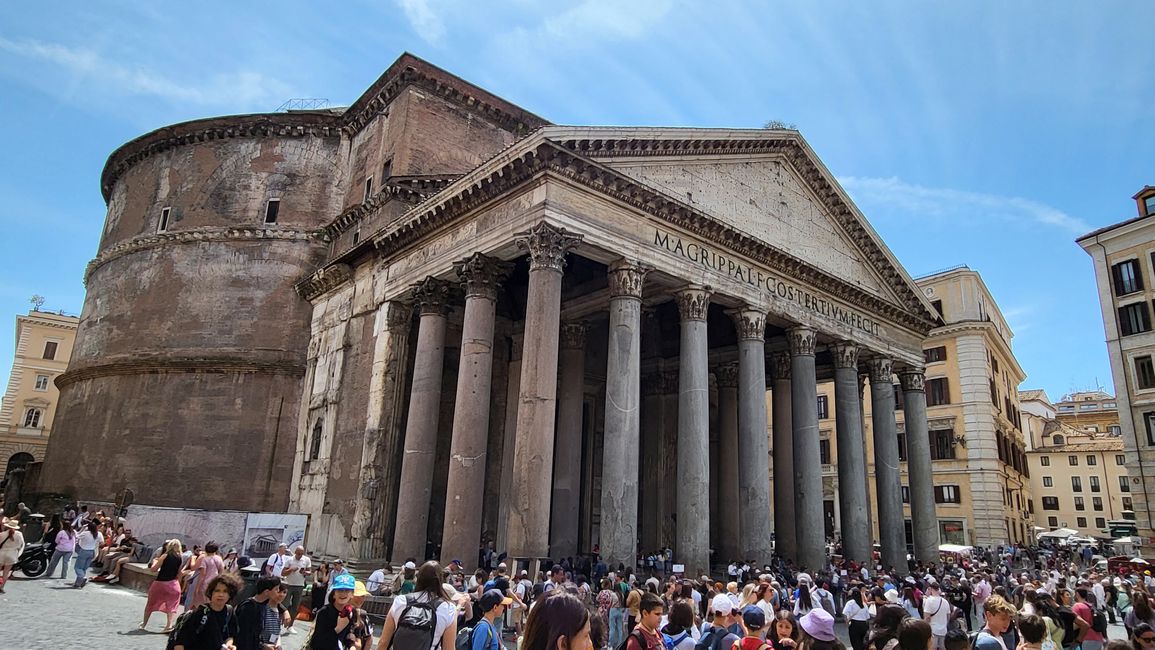And once again Emperor Augustus
Objavljeno: 18.05.2024
You can tell that I am a great admirer of Emperor Augustus. He led the state of the Roman Empire into a prosperous and peaceful time. Political decisions were always made with a focus on the well-being of the Roman people and peaceful moral life in society. His humble and noble character made his political decisions credible and he thus also represented a virtuous role model. Accordingly, a peace altar was dedicated to this time of peace around 13 BC, the construction of which was completed in 9 BC and is now on display in a separate museum. The Ara Pacis Augustae has great symbolic value for the extraordinary status of this time. Companions and family members can be seen on the reliefs. Ornamentation and symbolism dominate the altar. The spiral frieze of the Ara Pacis is one of the largest bas-reliefs with plant tendrils ever depicted in the classical world. It shows an expanding plant motif on both sides of the altar. This plant consists of numerous different species, each with its own stalks and stems, calyxes and corollas, leaves and pistils, berries and tendrils, which are in a constant state of metamorphosis. The altar is not large, but anyone who is really interested should pay the entrance fee and not just look through the dusty and reflective glass panes from outside.
Right next door is the Mausoleum of Augustus, which used to be located on an axis from the Pantheon across the Campus Martius. The round building has been under restoration for several years now, so it is not accessible and is surrounded by construction fences with privacy screens. I manage to find a tiny gap in the fence on the side, but it doesn't give me a good view. It is only thanks to my wife's attentiveness that I have a better view of the mausoleum, as she discovered a better viewing access in a shop gallery. Only the lower parts of the core and the remains of the walls of the mausoleum have survived, as these were later used as a fort by the Roman noble family Colonna.
Speaking of "not visited". Despite its fame, we did not visit the Pantheon from the inside, which is located in the former line of sight. The decisive factor was the constant large crowds of people at this place, despite including it on several routes. Long queues always meant there would be long waiting times, which I simply did not want to invest. So we always moved on after taking a few photos from the outside.
Odgovori
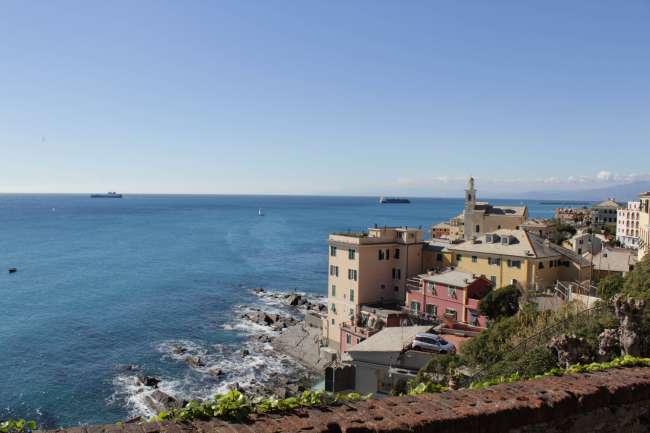
Poročila o potovanjih Italija
